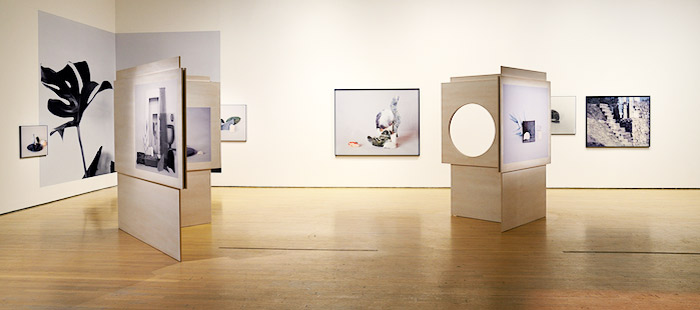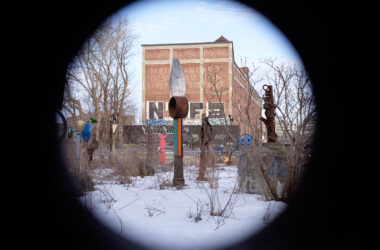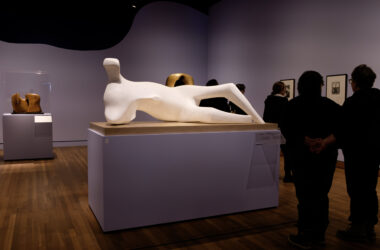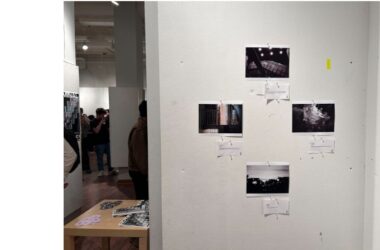Since its launch in 1998, La Biennale de Montréal (BNLMTL) has been a touchstone for contemporary art. Founded by the Centre International D’Art Contemporain de Montréal, BNLMTL, a festival that showcases both local and international artists, situates itself at the centre of a broader conversation about the role of art today. On Oct. 19, the festival premiered The Grand Balcony exhibition at the Musée D’art Contemporain.
“Through its initiatives, BNLMTL also strives […] to examine […] the particular experience it provides in probing the burning questions of the world today,” explained the exhibition materials. The exhibition epitomizes BNLMTL’s quest for intellectual stimulation. A divergence from the flashiness of popular events like Nuit Blanche, The Grand Balcony encourages its audience to take time walking through. “Luckily the Biennale de Montréal has some duration,” curator Phillipe Pirotte explained in an interview with Canadian Art. “We’ve somehow forgotten that visual art can create time.”
Pirotte creates an exhibition filled with contradiction and juxtaposing nationalities, mediums, and concepts.
“[Pirotte’s] golden rule: never use art to illustrate an issue,” wrote Isa Tousignant in Canadian Art. Yet, much of the work he presents is politically driven.
The exhibition’s video art was particularly intent on representing current global issues. Israeli filmmaker Michael Blum’s The Swap investigates the 2008 financial crisis, creating a biting commentary on the capitalist system that failed, yet didn’t fall. French filmmaker David Gheron Tretiakoff’s A God Passing explores Egyptian citizens’ newfound sense of power in the 2007 Arab Spring. New Zealand/UK-based artist Luke Willis Thompson tackles a lack of diverse representation within mainstream art. His Cemetery of Uniforms and Liveries recreates Warhol’s 1964-66 Screen Tests, a film project that famously included virtually no faces of colour. Thompson’s interpretation features a black descendant of police brutality as its protagonist. Visually and aurally compelling, these films used varying aesthetic styles and strategies to create strong political stances.
However, these works, each expressing distinct thematic and aesthetic visions, get lost among pieces that lack similarly clear points of view. Take Celia Perrin Sidarous’ Notte Coralli—a series of photographs that use different textures and shapes to create a layered sense of temporality, or Valerie Blass’ vibrant abstract sculptures. Each of these works is visually stunning—Sidarous’ pastel photos are calming, Blass’s sculptures are intricately textured—yet they both follow a trend that favors aesthetics over substance, which Pirotte claims to abhor. Even the artists’ descriptions make use of the vague jargon often mocked by contemporary art critics such as Jerry Saltz.
“The works selected for Le Grand Balcon betray a preference for ‘images’ of deep historical resonance that materially and sensorially bind us to the here and now,” the curatorial statement explained. Yet the contradiction between pieces that are either meaningful or aesthetically pleasing makes it unclear exactly what Pirotte wants to say about the current state of contemporary art.
If these mixed messages make for an exhibition that is ideologically confusing, then it also creates an experience that is temporally enriching. While many modern exhibitions are fast-paced and attention grabbing, The Grand Balcony does not talk down to its audience. The diversity of work within The Grand Balcony is intentionally difficult to digest. A self-proclaimed traditionalist, Pirotte is skeptical of fanfare. “I don’t see art as benefitting from festivals,” he explained.
The Grand Balcony is a captivating experience. Representing artists from across the globe and art forms from a variety of disciplines, the exhibition accomplishes its mission of encouraging its audience to think. Yet, The Grand Balcony would be more compelling if it were more decisive and clear on its takeaway points. Still, with video art tucked in obscure corners and sharp visuals at every turn, The Grand Balcony is a seemingly endless experience, and is worth exploring at least once, if not more.
The Grand Balcony runs until Jan. 15, 2017 at the Musee d’Art Contemporain. La Biennale de Montréal is a festival with exhibitions at locations across Montreal. Visit bnlmtl2016.org for more information.









